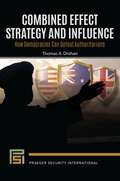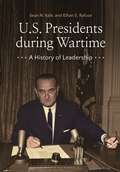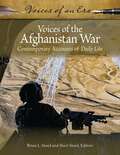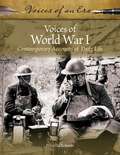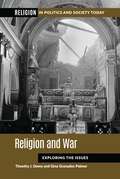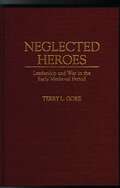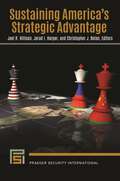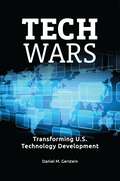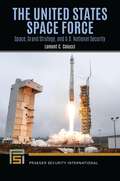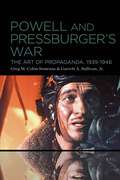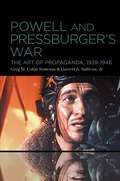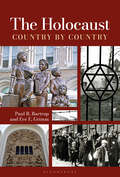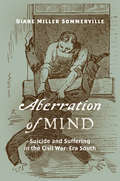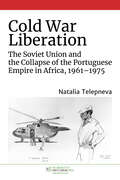- Table View
- List View
Combined Effect Strategy and Influence: How Democracies Can Defeat Authoritarians (Praeger Security International)
by Thomas A. DrohanOffering a competitive strategy to defeat authoritarians' all-domain warfare, this book suggests a new combined effects and influence framework for democracies to employ before deterrence fails.Breaking new ground in this comprehensive study, retired Brigadier General Thomas A. Drohan reforms an entrenched legacy concept-coercive compellence and deterrence. The book's framework synthesizes brute force, coercion, combined arms, and concepts of operations into combined effects and concepts of influence, including narrative warfare with cognitive exploits. The survey of competitive strategy at the beginning of the book spans a time frame from the thinking of ancient civilizations all the way to artificial intelligence, providing broad historical context for this model. The contemporary cases that test the model focus on complex competition and confrontation during the past 75 years.Combined Effect Strategy and Influence is unique in its critique of democracies' dominant paradigm of international security and its broad, specific framework ready for strategists, analysts, planners, and operators to apply to current threats. Students, researchers, and any leader interested in developing superior strategy will value the book's insights on gaining an advantage against emerging threats.
U.S. Presidents during Wartime: A History of Leadership
by Sean N. Kalic Ethan S. RafuseFrom the American Revolution to the War in Afghanistan, the United States has had no shortage of conflicts on both domestic and world stages. All provide insight into the values of the presidents who led the nation through them.U.S. Presidents during Wartime: A History of Leadership takes readers through chronological entries of presidents who participated in key wars throughout U.S. history. An overview essay first considers the social, economic, and political factors that affected presidents during war. Entries beginning with the presidency of George Washington and ending with that of George W. Bush comprehensively cover each war therein, as well as the responses of the relevant presidents.Primary documents in each entry depict the perspectives of the presidents and offer opportunities for comparing and contrasting the presidents' engagements in wartime strategies. Ending each entry are chronologies of the various events and conflicts that marked the president's time in office. Moreover, entries build upon each other to help readers toward a broader understanding of the sum impact of the wars that the presidents led. While the book emphasizes the historical record, it also explores ongoing conflicts through the lens of contemporary U.S. presidents to provide readers with a complete picture of the changing nature of war over time.
Voices of the Afghanistan War: Contemporary Accounts of Daily Life (Voices of an Era)
by Brian L. Steed Sheri SteedThe War in Afghanistan was the longest military conflict in American history. In a diverse collection of primary documents, this book explores the evolving legacy of the war and its impact on the countless lives it changed forever. Following the terrorist attacks on September 11, 2001, the United States spent almost 20 years at war in Afghanistan until it officially withdrew its military forces in August 2021. As the longest war in American history, the War in Afghanistan cost trillions of dollars to sustain and claimed the lives of thousands of American soldiers and many more Afghan civilians. This book tells the story of the war from its varied perspectives, including documents from American and Afghan politicians, high-ranking military officers, and diplomats. The topics covered are even more diverse, ranging from the building and training of security forces and the use drones in modern warfare to the importance of education and the role of women in combat. What the editors lead readers to understand is that the peoples referred to as Afghans have little in common beyond the land itself-a simple, basic, and ultimately ignored reality at the heart of the U.S. invasion, occupation, and frustration in Afghanistan.
Voices of World War I: Contemporary Accounts of Daily Life (Voices of an Era)
by Priscilla RobertsBringing together a diverse collection of primary source documents, this book illuminates the events and experiences of World War I from a variety of perspectives, from soldiers on the front lines to civilians supporting the war effort at home.Part of Bloomsbury's Voices of an Era series, this carefully curated collection highlight the wartime experiences of a diverse array of individuals from around the globe. In addition to covering major military innovations and turning points, documents explore how issues of gender, race,diplomacy, and empire building impacted individuals' experience of the Great War.Each of the 42 documents includes contextual information and thought-provoking questions to guide readers in their exploration of the text. In addition to high-interest sidebars, in-text glossary definitions, biographical snapshots of key figures, and a comprehensive chronology of the war, the book also includes a guide to evaluating and interpreting primary sources that bolsters readers' analytical and critical thinking skills.Although it was nicknamed "the war to end all wars," World War I heralded the start of modern-day conflicts. The human toll of the Great War was immense-an estimated 9 million soldiers died on the battlefield, while more than 5 million civilians died as the result of military actions, disease, or famine. In the wake of World War I, empires crumbled and new nations won their independence. Although the events and aftermath of World War I happened on an epic scale, the conflict is best understood through the human lens provided by these primary sources.
Religion and War: Exploring the Issues (Religion in Politics and Society Today)
by Timothy J. Demy Gina Granados Ph.D.Looking at topics across the spectrum of America's wars, religious groups, personalities, and ideas, this volume shows that even in an increasingly secular society, religious roots and values run deep throughout American society and are elevated in times of war.There is a long and deep relationship between religion, politics, and war in U.S. history. While there is a constitutional and legal separation of religion and the state in American society, religion has been and remains a potent force in American culture and politics affecting many aspects of life, including perspectives on war and peace and the experience of war in U.S. history. From the American Revolution to the wars of the 21st century, religious values have informed and influenced American attitudes toward war and peace and have provided rationale for support and non-support of American participation in conflicts.An overview essay surveys the background and significance of religion in American culture and provides historical context for discussions of contemporary topics. A timeline highlights key events related to wars and conflicts. The volume then includes more than 50 topical essays that discuss specific wars as well as religious themes within culture and politics, ultimately providing a detailed overview of the intersection of religion, war, and politics in contemporary America.
Neglected Heroes: Leadership and War in the Early Medieval Period
by Terry L. GoreContrary to prevalent military historical thinking, the early medieval general was not an ignorant warrior chieftain, but an able, astute, intelligent, and often very cunning commander. Through the use of contemporary literature, art, and archaeological evidence, this study argues that these generals could and did effectively exercise command control before, during, and after battle. Using the examples of a dozen or so leaders and drawing upon over 60 battles, this study brings to light the genius and the adaptability of medieval generals.
Sustaining America's Strategic Advantage (Praeger Security International)
by Joel R. Hillison, Jerad I. Harper, and Christopher J. Bolan, EditorsWritten for foreign policy practitioners, scholars, and students, this book offers critical insights into the modern landscape of international politics and warfare and explains how the United States can sustain its strategic advantages in the 21st century and beyond.From the level of grand strategy to more intricate security issues, this book explores how the United States can sustain its strategic military and political advantages around the world. Developing and implementing effective national policies; fostering strong diplomatic and geopolitical ties with allies in Europe, the Indo-Pacific, and the Middle East; and managing an effective defense enterprise are key, according to the authors, to competing on a shifting international security landscape. Advancing the literature on grand strategy and outlining emerging critical issues in security, this book offers an overarching framework for strategy; an analysis of crucial security-related topics, such as cyber warfare; and informed opinions on components of competitive success, such as irregular warfare and partner building. Written by well-respected scholars, security professionals, and foreign policy practitioners, this book goes beyond focusing on hard power to consider how the U.S. can leverage its education institutions and a worldwide network of allies and partners to sustain its strategic advantage now and in the future.
Tech Wars: Transforming U.S. Technology Development
by Daniel M. GersteinThis book explores the evolution of the current U.S. research and development enterprise, asks whether this organization remains appropriate to the challenges we face today, and proposes strategies for better preparing for the global technology race shaping our future.Across the globe, nation states and societies, as well as corporations, technology developers, and even individuals, find themselves on the front lines of a global technology race. As we approach the third decade of this century, the outlines of the contest have become clear. Spending on research and development, such new methods as innovation centers, and inclusion of powerful technologies into governments and society are occurring at a rapid pace. Technology winners and losers are emerging.How did we arrive at this global technology fight? How and where will it be waged? What can we do to prepare for the future? In 10 chapters, Tech Wars addresses these questions and more, examining the conditions that have led us to this point and introducing new strategies, organizational changes, and resource allocations that will help the United States respond to the challenges that are on the horizon.
The United States Space Force: Space, Grand Strategy, and U.S. National Security (Praeger Security International)
by Lamont C. ColucciThe United States Space Force, the sixth branch of the armed forces, will soon play a leading role in American foreign policy and will be necessary to protect its economic, political, and social interests at home and abroad.This book argues that America's newest branch of the armed forces, the United States Space Force, will soon play a key strategic role in American foreign policy, military and economic expansion, and technological innovation. Written by a leading expert on and member of the Space Force, the book offers an introduction to the Space Force, explains the urgent need for it, and walks readers through what exactly the Space Force is and is not. Drawing on dozens of interviews with high-ranking members of the armed forces, the author claims that, in the future, space will be the geopolitical center of world politics, as such countries as the U.S., Russia, and China jockey for control of it. America must therefore set aside partisan politics to make space a top priority, as a failure to do so will leave the U.S. and its citizens in a dangerous and vulnerable position on the world stage.
Powell and Pressburger’s War: The Art of Propaganda, 1939-1946
by Professor Greg M. Semenza Garrett A. Sullivan Jr.A focused study on Michael Powell and Emeric Pressburger's cinematic contributions to the war effort, arguing for the centrality of propaganda to their work as film artists.Michael Powell and Emeric Pressburger are widely hailed as two of the greatest filmmakers in British cinema history. The release of their first movie, The Spy in Black, barely preceded the beginning of World War Two, and a number of their early masterworks, including The Life and Death of Colonel Blimp, A Canterbury Tale, and A Matter of Life and Death, were produced in the service of the war effort. Through exploring the relationship between art and propaganda, this book shows that Powell and Pressburger saw no contradiction between their aesthetic ambitions and their cinematic war work: propaganda imperatives were highly conducive to their objectives as both commercial cinema practitioners and artists.Drawing on production materials from the archives of the British Film Institute, this book charts three phases in Powell and Pressburger's wartime career: from first-time collaborators who strive to reconcile popular cinematic forms with developing notions of what constitutes effective propaganda; to accomplished, and sometimes controversial, propagandists whose movies center upon Britain's relations with its enemies and allies; to filmmakers whose responsiveness to the propaganda requirements of the late war is matched by a focus, shared by the Ministry of Information, on what the post-war future would bring.
Powell and Pressburger’s War: The Art of Propaganda, 1939-1946
by Professor Greg M. Semenza Garrett A. Sullivan Jr.A focused study on Michael Powell and Emeric Pressburger's cinematic contributions to the war effort, arguing for the centrality of propaganda to their work as film artists.Michael Powell and Emeric Pressburger are widely hailed as two of the greatest filmmakers in British cinema history. The release of their first movie, The Spy in Black, barely preceded the beginning of World War Two, and a number of their early masterworks, including The Life and Death of Colonel Blimp, A Canterbury Tale, and A Matter of Life and Death, were produced in the service of the war effort. Through exploring the relationship between art and propaganda, this book shows that Powell and Pressburger saw no contradiction between their aesthetic ambitions and their cinematic war work: propaganda imperatives were highly conducive to their objectives as both commercial cinema practitioners and artists.Drawing on production materials from the archives of the British Film Institute, this book charts three phases in Powell and Pressburger's wartime career: from first-time collaborators who strive to reconcile popular cinematic forms with developing notions of what constitutes effective propaganda; to accomplished, and sometimes controversial, propagandists whose movies center upon Britain's relations with its enemies and allies; to filmmakers whose responsiveness to the propaganda requirements of the late war is matched by a focus, shared by the Ministry of Information, on what the post-war future would bring.
The Holocaust: Country by Country
by Eve E. Grimm Professor Paul R. BartropFrom genocidal campaigns to careful neutrality to valiant lifesaving efforts, every country's experience of the Holocaust was different during and immediately following World War II.This book profiles 50 nations and territories from around the globe, examining how prewar conditions and attitudes toward Jews influenced the trajectory of that place's wartime experience and its role in the Holocaust. It also explores the aftermath and lasting impact of the Holocaust in these places. Each profile begins with a collection of at-a-glance facts about population, government leaders, wartime status, and more. All profiles begin with a brief introduction, followed by information about the Jewish population in that place, the prewar environment, wartime experiences, and the aftermath of the Holocaust. This standardized format makes it easy for readers to find specific information while also helping them place events within the proper historical context. A curated selection of further readings at the end of each profile and an end-of-volume list of books and Internet resources point readers toward materials for additional study.While often conceptualized as a single event that happened the same way across all Axis or Axis-occupied countries, the Holocaust and reactions to it varied widely from country to country. In many cases, political and economic conditions in the prewar years, as well as the degree of anti-Semitism in a nation, influenced that country's experience of the Holocaust. Even after the war, countries experienced the aftermath of the Holocaust in different ways. Some places, such as Palestine, became a beacon for Jewish refugees, while others, such as Brazil, became a hideout for Nazi war criminals.
Aberration of Mind: Suicide and Suffering in the Civil War–Era South
by Diane Miller SommervilleMore than 150 years after its end, we still struggle to understand the full extent of the human toll of the Civil War and the psychological crisis it created. In Aberration of Mind, Diane Miller Sommerville offers the first book-length treatment of suicide in the South during the Civil War era, giving us insight into both white and black communities, Confederate soldiers and their families, as well as the enslaved and newly freed. With a thorough examination of the dynamics of both racial and gendered dimensions of psychological distress, Sommerville reveals how the suffering experienced by Southerners living in a war zone generated trauma that, in extreme cases, led some Southerners to contemplate or act on suicidal thoughts. Sommerville recovers previously hidden stories of individuals exhibiting suicidal activity or aberrant psychological behavior she links to the war and its aftermath. This work adds crucial nuance to our understanding of how personal suffering shaped the way southerners viewed themselves in the Civil War era and underscores the full human costs of war.
Cold War Liberation: The Soviet Union and the Collapse of the Portuguese Empire in Africa, 1961–1975 (New Cold War History)
by Natalia TelepnevaCold War Liberation examines the African revolutionaries who led armed struggles in three Portuguese colonies—Angola, Mozambique, and Guinea-Bissau—and their liaisons in Moscow, Prague, East Berlin, and Sofia. By reconstructing a multidimensional story that focuses on both the impact of the Soviet Union on the end of the Portuguese Empire in Africa and the effect of the anticolonial struggles on the Soviet Union, Natalia Telepneva bridges the gap between the narratives of individual anticolonial movements and those of superpower rivalry in sub-Saharan Africa during the Cold War. Drawing on newly available archival sources from Russia and Eastern Europe and interviews with key participants, Telepneva emphasizes the agency of African liberation leaders who enlisted the superpower into their movements via their relationships with middle-ranking members of the Soviet bureaucracy. These administrators had considerable scope to shape policies in the Portuguese colonies which in turn increased the Soviet commitment to decolonization in the wider region. An innovative reinterpretation of the relationships forged between African revolutionaries and the countries of the Warsaw Pact, Cold War Liberation is a bold addition to debates about policy-making in the Global South during the Cold War. We are proud to offer this book in our usual print and ebook formats, plus as an open-access edition available through the Sustainable History Monograph Project.
